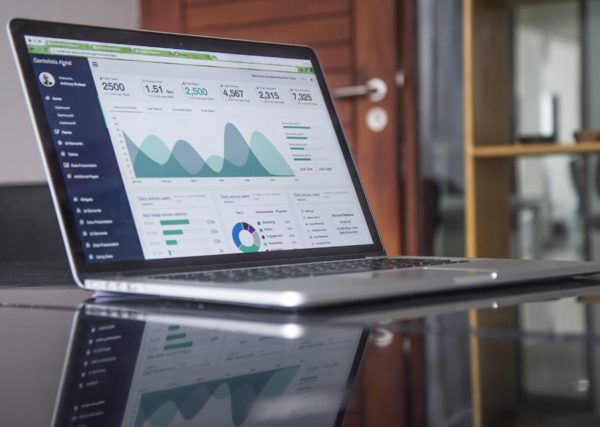Out of the many lessons that 2020 has taught small business owners, this one is clear: almost everyone has gone digital, and if you’re not tapping into that opportunity, you’re falling behind.
We have talked to many small businesses, and one thing they have in common is that they don’t know where to start with their marketing, especially now that everything is online. Is it getting a website? Is it building content for social media? Is it pay-per-click—but why should I spend money on that?
If you’re a small business owner with limited experience in marketing, this guide is for you. Read on to learn the three core steps of how you can market your business in 2021.

1. Perform a Segmentation, Targeting, and Positioning Analysis
Now that you’ve got your business idea, the first step in your small business marketing strategy is to complete a Segmentation, Marketing, and Positioning (STP) analysis.
STP is a customer-centric approach to marketing your business. It helps you define who your target audience is, how your product relates to that particular group of people and how you can position your product and messaging to draw their attention.
Many new business owners make the typical mistake of assuming “everyone” to be their target audience. STP prevents you from doing that.
Let’s start with Segmentation.
Segmentation
Segmentation is the process of dividing your audience into smaller groups based on certain characteristics, which often include:
- Geographic Segmentation: country, city, climate, ZIP code, urban or rural
- Demographic Segmentation: age, gender, education, location, family situation, profession and/or income
- Psychographic Segmentation: personality traits, interests, attitudes, priorities, beliefs, and values
- Behavioural Segmentation: purchasing and spending habits like brand loyalty, channel preferences, shopping frequency
If you have existing customers, you can start your segmentation process by analyzing your audience. Look into your data, talk to your salespeople, interview your customers to see who they are.
If you don’t have existing customers, think of who the ideal buyer is for your product. Think of how your product is delivered and who would choose your product based on its benefits.
Once you’ve done this, you can take a further step and create a customer/buyer persona representing each market segment. This helps you visualize more specifically who you’re selling to, what their likes and dislikes are, what their shopping quirks are, and then determine the marketing channels and messaging that best fit them.

Targeting
Targeting refers to the process of choosing the right segment to direct your marketing effort.
You can have multiple segments of your market, but it’s best to target one segment at a time, especially when you’re starting out with a limited budget.
To know what segment to go for, think of strategic questions like:
- How much profit would this segment yield compared to the other segments?
- Are there enough potential customers in this segment?
- Is the segment accessible by marketing and sales? Are there any barriers to prevent your company from serving the segment?
Positioning
Once you’ve identified who your target audience is and which segment to go for, you can start positioning your product and brand.
One way to position your brand is to create a positioning map, comparing the two attributes that are the make-or-break feature of your audience’s deciding process. This helps you understand how your target market views your product vs. your competitors’, thus be able to find a market opportunity for your brand.
Include a positioning statement on your website to help customers know what makes you different from your competitors. Think of your target audience. If you were them, why would you choose your product over your competitors’? Why are you the better option? What is your Unique Selling Proposition (USP) i.e. the one thing that separates you from your competition?
2. Determine Your Marketing Channels
When you’re a small business, most of the time you’re dealing with a limited budget. This means that you aren’t capable of spending tons of dollars on every marketing channel to reach your target audience.
Think of your product and your target audience. What are the channels that best deliver the core features and benefits of your product? What are the channels that best reach your targeted buyer?
It is not strategic to use all marketing channels anyway—some channels work better than the others.
Now that almost every company has gone digital, first, get yourself a website then consider these as the main channels to go for:
Social Media
Most companies are present on social media these days. It’s one of the best ways to get yourself known and reach your target audience. It is completely free (unless you plan to spend some money on social media ads) so it’s the perfect channel to start with.

Content Marketing
It is often difficult to present all the features and benefits of your product, in detail, on one page. Here’s where content comes to play. As videos and audios are performing really well, consider integrating them into your current (written) content to deliver the best on-page experience to your customers.
Search Engine Optimization (SEO)
Another free marketing effort to get yourself known. SEO refers to the process of optimizing your website content to make it present, hopefully, on the first page of most search engines like Google or Bing. When people type a keyword that is relevant to you, you want them to go to your website and look at your product. To do that, create valuable, relatable content and make it SEO-friendly.
Email Marketing
Email marketing is one of the best channels to nurture your leads and drive sales. Most email marketing services now do not cost that much either, so if you have content, promotions, or other news you want to share with your target audience, invest in email marketing.
Pay-Per-Click (PPC)
PPC channels like paid search, display ads, or social media ads can help drive awareness and conversion. Instead of waiting for your target audience to come to your website through Content & SEO (which is a long-term game), PPC can bring your product to your target audience, prompting them to decide.
Mobile App
Smartphone users spend 90% of their mobile time using apps and games, so if your product can be purchased through, or made into a mobile app, go for it. It’s also a good channel to deliver news and promotions to your customers and collect customer data.

Of course, there are other channels like Out-Of-Home advertising (OOH), TV commercials, radios, print ads, public relations, and more. But as you’re a small business, it is best to focus your marketing strategy around our recommended marketing channels, especially if your product can sell online. If you haven’t gone digital, however, in-store promotions and direct mail marketing are also good channels to go for.
Most of the time, you are not using these channels separately. To effectively market your business, use these channels in tandem and make sure all messaging and communications are consistent across all channels and focused on your target audience.
3. Work on Your Marketing Goals, Budget, and Performance Measurement
You should never proceed without having a clear direction of where you think your business is and will be.
Set up SMART (specific, measurable, achievable, relevant, time-bound) goals for your marketing effort. These should be in relation to the data you have about your market, your target audience, the different marketing channels you can opt for, and your budget.
As a rule of thumb, about three to five percent of your annual revenue should be spent on marketing. This amount can be lower if you’re a B2B company, and higher (5-10%) if you’re B2C.
Depending on what product you’re selling, you may need to prioritize certain marketing channels during specific periods. For example, if you’re operating a bakery, you should spend more on marketing during special occasions such as Christmas, New Year, or Valentine’s Day, as people tend to look for gifts during such time.
As you scale, you may want to see Return on Investment (ROI) sooner. You’ll get the cash flow for future projects and long-term plays in this way. If you see clear purchasing intent for your product on search engines, consider investing in PPC first to get that short-term ROI.
You can also consider investing in a marketing agency or hiring an in-house marketing team, depending on what your budget allows. Starting out, it can cost less to hire one person to market your business for you. However, as you scale, you may need to invest in marketing specialists for each marketing channel, or hire an agency to do the work.
Ultimately, think of every factor that affects your marketing effort and allocate your budget accordingly. Make sure you regularly keep track of costs and make adjustments when necessary. Analyze your quarter and annual budget reports and answer these questions:
- Are your projections aligned with your actual spending?
- What is your ROI for each marketing channel?
- How do you perform compared to industry standards?
- How do (you think) you perform compared to your competitors?
Make sure you monitor your data for your marketing and business performance metrics to see if you’re getting results for what you’re investing in. If not, look into it to see what works and what doesn’t, and tweak your strategy accordingly.

Now is the Best Time to Start Marketing Your Business
There you have it—the basics of how you can market your business in 2021. Jot down action items you can take from each step of building your small business marketing strategy, and follow through with them all. You may not complete everything within a day, but every single step is one step closer to getting people to know who you are and to purchase your product.
For more tips on marketing strategy for small business owners, check out our LinkedIn and Instagram. If you’re a digital marketer yourself, join our digital marketing community to access resources and connect with professionals in your industry.

